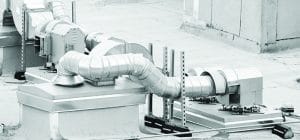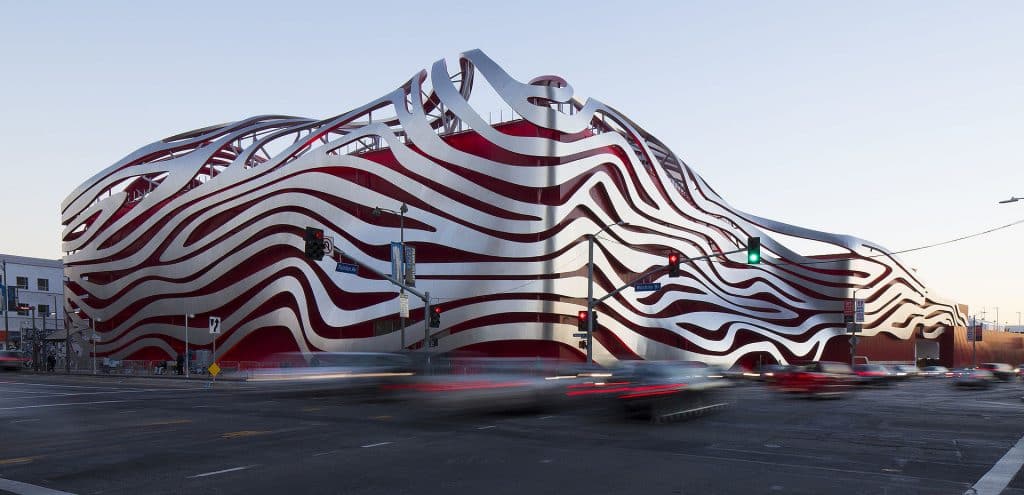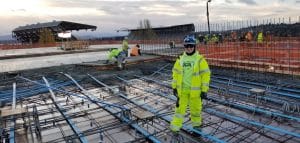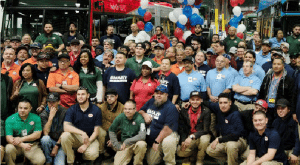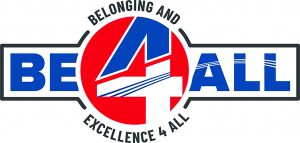At SMART, our members are qualified professionals and certified tradespeople dedicated to all aspects of architectural cladding, custom sheet metal and complete ventilation systems. This webpage features just a few of the LEED projects our members have built in recent years.
We believe truly sustainable building projects must include the best materials, but also good family-wage careers, expert training and high quality construction done safely. We partner with our signatory contractors across the United States and Canada to supply generations of hands-on experience and a commitment to safety on every project.
Our sheet metal members fabricate and install proper ventilation and air filtering systems to ensure the overall health of our schools, offices, hospitals and homes. Our roofing and architectural members play a vital role in the building envelope by enhancing and protecting your investments. And our manufacturing members build HVAC units and other key building products to meet energy efficient standards.
Together, we are building healthy communities for a better tomorrow.

The COVID-19 pandemic demonstrated what SMART has known for decades — our schools, hospitals and other public buildings have neglected indoor air quality, and it must be addressed to keep our communities safe now and in the future. We should all be able to enter buildings with an assurance that we are safe. Unfortunately, this doesn’t always happen. In the case of our public schools, many buildings have been neglected for decades. A 2020 report by the United States Government Accountability Office (GAO) estimated 41% of school districts need to update or replace the existing HVAC systems in at least half of their schools. Per the report, “If not addressed, HVAC issues can result in health and safety problems.” Read the EPA Fact Sheet on Clean Air in Buildings for more information.
SMART and our partners at SMACNA and NEMI are partnering with the White House on initiatives to provide the skilled, trained, certified workforce necessary to meet the demand for healthier buildings. If you would like to find a contractor that can provide the recommended ventilation verification programs, please visit the website: https://www.betterairinbuildings.org/
Schools are a major focus of this effort, given the longitudinal data that shows a correlation between learning outcomes and indoor air quality. In August the White House put out a fact sheet on the school buildings initiative, which included the following mention of the partnership with SMART:
The Administration is collaborating with organizations that provide expert guidance and technical support from skilled, trained, and qualified technicians to help make indoor air quality improvements easier for schools to navigate. HVAC professional associations, including the American Society of Heating, Refrigerating and Air-Conditioning Engineers,International Association of Sheet Metal, Air, Rail, and Transportation Workers, National Energy Management Institute, and the Sheet Metal and Air Conditioning Contractors’ National Association, are committed to working with schools to help them develop and implement plans to improve ventilation and can help schools get connected to local technical experts.
To address this issue, SMART recommends that buildings follow a Ventilation Verification Program — a physical assessment of existing Heating, Ventilation, and Air Conditioning (HVAC) infrastructure. This is a critical tool to make the air we breathe safe. The key to making sure air in our buildings is safe, is making sure HVAC systems are repaired, installed, adjusted and maintained by technicians who are trained and certified to provide recommended ventilation rates and filtration levels. Numerous studies have documented that poor-quality installation work is common and leads to reduced energy efficiency and increased safety hazards. There is also evidence that new technology—such as add-on devices that promise to monitor and adjust HVAC systems—have not been proven as effective as a physical assessment. SMART encourages all public and private buildings to adopt ventilation verification program standards. Building owners can sign the White House pledge for Clean Air In Buildings.
Hire a SMART professional to do the work:
Today’s HVAC systems are complicated because they need to provide thermal comfort while simultaneously maintaining proper indoor air quality and meet energy efficiency goals. For these systems to operate correctly, contractors must be selected that employ personnel with the following skills, training and certifications to design, install, maintain, repair, replace and upgrade HVAC systems.
Certified Testing, Adjusting and Balancing (TAB) Technician. An ANSI ISO/IEC 17024 accredited technician certified to perform testing, adjusting, and balancing of HVAC systems by the Testing, Adjusting, and Balancing Bureau (TABB) or one of the other industry recognized certifying agencies: Associated Air Balance Council (AABC), or the National Environmental Balancing Bureau (NEBB).
Design Professional. A licensed mechanical engineer, certified industrial hygienist (CIH), or mechanical design professional as defined by state or provincial guidelines.
Qualified Adjusting Personnel. Qualified Adjusting Personnel should either be: (1) a Certified TAB technician; or (2) a skilled and trained workforce under the direct supervision of a certified TAB technician.
Qualified Testing Personnel. Qualified Testing Personnel should either be: (1) a certified TAB technician.; or (2) a person certified to perform ventilation assessments of heating, ventilation, and air conditioning system as a technician through a program accredited by ANSI under the ISO/IEC 17024 standard.
Skilled and Trained Workforce. A skilled and trained workforce is a workforce in which at least 60% of the workers are graduates of a registered apprenticeship program, in the state or province for which the work is being performed, for the applicable construction occupation.
Funding is available through the American Rescue Plan and Bipartisan Infrastructure Law to help buildings invest in HVAC infrastructure and improve indoor air quality in buildings. Visit BetterAirInBuildings.org
Buildings account for about 40% of total energy use in the United States. 35%+ of the energy generated in the United States is used to operate buildings HVAC systems. SMART’s manufacturing members work in factories where continuous product improvement to exceed Department of Energy standards is a cornerstone of our work. We produce energy efficient air movement equipment and heating and cooling machinery and insulated duct systems. We build dedicated outside air systems (DOAS) units, rooftop units, water-source heat pumps, underfloor air distribution systems, and chilled beams. Each of these products are green, leading-edge technologies designed, manufactured, and installed by SMART members to reduce energy usage. For examples of HVAC products made by our members, here are specs from three SMART signatory firms:
Scrap metal, plastic, and cardboard created through manufacturing processes are subject to reduction efforts in our shops. Scrap reduction and recycling of these materials are labor-management objectives, encouraged by paid incentives and employee recognition programs.
Architectural sheet metal is a combination of technical skill and artistry. Our locals train professionals for the following positions in this field:
- Installers
- Fabricators
- Solderers
- Crew Leaders
- Designers
- Project Managers
- Customer Sales and Services
SMART members also manufacture and install insulated metal panels and metal roofing systems.
Despite decades of increased productivity, workers are not sharing in the fruits of their labor. When a project employs SMART members, it not only ensures quality construction, but it supports fairness, equity, and safety for workers and the community. SMART members have a voice on the job, secure retirement, and many other benefits that protect their health and their families.
SMART has always advocated for policies that promote an economy at wages high enough to allow working people to support their families. SMART works to combat policies that erode the rights of working people, and also to support policies that make sure wealth generated by our labor is fairly rewarded.
To achieve these goals, we support a broad range of policies in our industries and in the overall economies of our two nations to promote living wages by enhancing and enforcing strong worker protections and collective bargaining. Be it the minimum wage or prevailing wages in the construction industry, the fight for a safe working environment for freight rail workers in railyards and beyond, pay equity for women and people of color, protecting people who work on passenger trains, buses or for transit agencies from violence, the restoration of federal overtime protections or putting an end to wage theft, SMART serves as a force to ensure workers have a strong voice when they join together to ensure an enhanced standard of living.
Two concrete recent examples of SMART’s efforts to impact the health of communities and empower workers on the job:
- SMART represents workers who manufacture electric buses for municipal transit systems. In 2017, BYD Motors became the first electric bus manufacturer in the U.S. to enter into a landmark Community Benefits Agreement (CBA) when the company signed an agreement with Jobs to Move America’s coalition and SMART Local 105 covering the manufacturer’s Lancaster plant. The CBA is a legally enforceable agreement that committed BYD to making deep investments in pre-apprenticeship and training programs and set out a goal of recruiting and hiring 40 percent of its workforce from populations facing significant barriers to employment, including people of color, veterans, and returning citizens.
- SMART is also supporting manufacturing workers at Kingspan in Santa Ana, Calif. who are organizing to protect not only the air they breathe in the factory, but the community that surrounds the plant where the company has had issues with storm water pollution clean-up efforts. Read about their advocacy, including workers’ whistleblower complaints to CalOSHA and CalEPA that resulted in regulatory actions, and improved safety in the workplace.
Helping workers win rights on the job goes hand in hand with growing a more diverse and inclusive labor movement. Diversity and inclusion strengthens our membership, benefits our communities and makes the unionized sheet metal industry stronger and more competitive by reflecting the communities where we operate and the people we serve. Our goal is to recruit, welcome and retain the most competent and skilled workforce available while embracing differences in age, ability, ethnicity, sex, gender identity, national origin, language, marital status, political affiliation, race, religion, sexual orientation and other characteristics that make individuals unique. SMART has no tolerance for bullying, harassment or discrimination.
To this end, SMART, SMACNA and the ITI have established the Belonging and Excellence for All (BE4ALL) effort. SMART recognizes that not all individuals and groups are situated the same, with the same access to resources and opportunities. Therefore, the Belonging and Excellence for All (BE4ALL) effort is tasked with working to ensure that all members, particularly those from historically underrepresented groups, experience all the opportunities that come from being a union member.
SMACNA’s leadership shares our vision for transforming the industry. Over the last year we have engaged in numerous discussions with SMACNA’s leadership, as well as International Training Institute (ITI) representatives, to build alignment and a shared sense of purpose: creating an environment for welcoming, belonging and excellence that attracts and retains anyone who has the skills and desire to meet our culture of excellence. As part of this vision, SMART, SMACNA and the ITI have retained Dushaw Hockett, our outside belonging and excellence expert, to provide facilitation and technical support for our joint BE4ALL effort.
You can learn more about the BE4ALL effort here.


